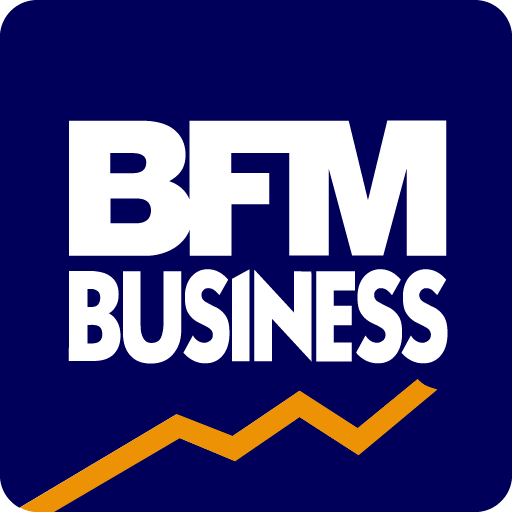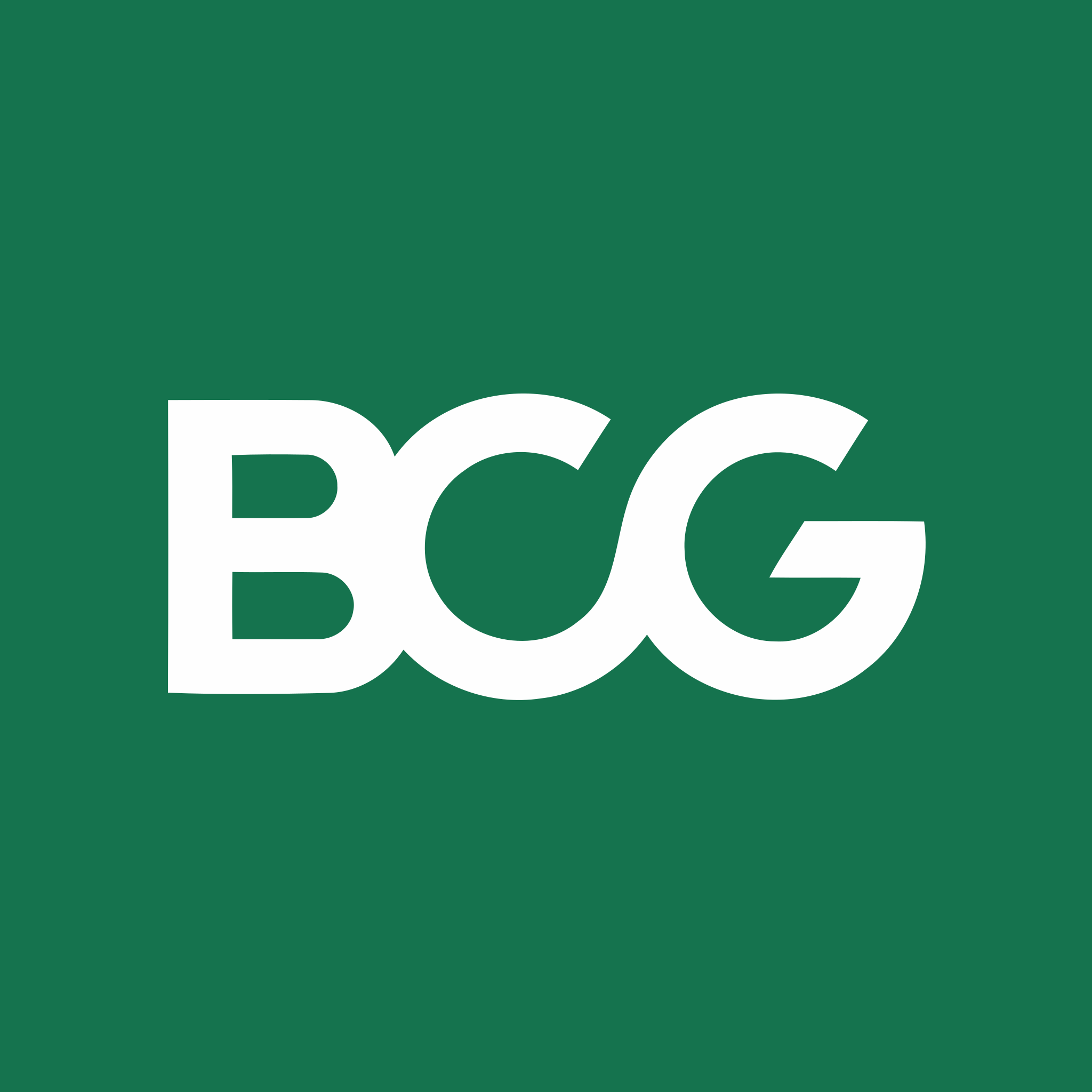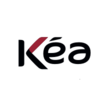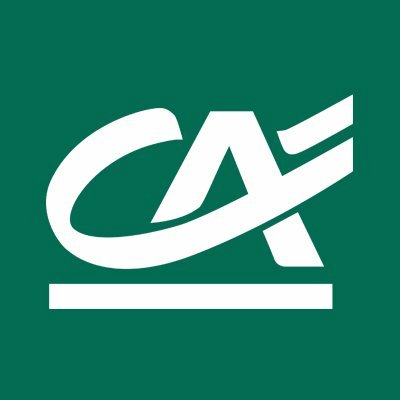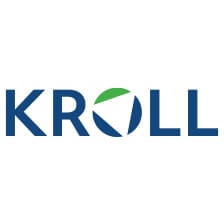Detailed content of our market study
 Inforamtion
Inforamtion
- Number of pages : 35 pages
- Format : Digital and PDF versions
- Last update :
 Summary and extracts
Summary and extracts
1 Market Summary
1.1 Definition and presentation
Bottled water is water packaged in plastic or glass containers for human consumption. It can come from natural springs, artesian wells or simply be treated drinking water. it comes in different types, such as mineral water, spring water and purified water.
The size of the bottled water market is estimated at $292.6 billion in 2025 and is expected to reach $406.3, growing at a compound annual growth rate (CAGR) of 6.79 percent during the forecast period. People nowadays have become more aware of the potential risks associated with contaminated tap water.
The European market is estimated at $75.54 billion in 2025 and is expected to reach $90.71 billion by 2030, with a compound annual growth rate of 3.73%. Over the period, the bottled water market in Europe is growing as sales in the sparkling and natural water categories increase through both retail (off-trade) and consumer (on-trade) channels. Bottled water sales are also increasing from online stores in areas where home delivery is an important sales channel. Growing consumer concerns about the consumption of contaminated tap water is a major contributor to market growth.
Forecasts on the value of the Italian bottled water market from 2023 to 2029 indicate an overall growth of 11.4 percent. The natural water segment is expected to record strong sales growth in volume, while sparkling and functional features are expected to record high growth in value. Good news also regarding thehedomestic production of mineral and packaged water in recent years, which shows an upward trend of 18,57%. Market dataindicate that despite the reduction in the number of companies, the sector has seen an increase in employment. This suggests a consolidation of the market, with fewer but larger firms.
1.2 The world market
The size of the bottled water market is estimated at $***.* billion in **** and is expected to reach $***.* billion by ****, growing at a compound annual growth rate (***). People nowadays have become more aware of the potential risks of contaminated tap water. According to WHO, at least *.* billion people worldwide used feces-contaminated drinking water sources in ****. Therefore, consumers are attracted to bottled water because of its easy portability, convenience, and safety guarantee. In addition, due to the increase in tourism globally, food service channels, such as hotels and restaurants, offer quality service to their tourists. These channels contribute to the high share of sales in the bottled water category, mainly from the natural bottled water segment. For example, according to the Ministry of Tourism and India's Bureau of Immigration, the number of foreign tourist arrivals in India has increased from *.** million in **** to *.** million in ****. As a result, the number of water bottles produced by the Indian Railway Catering and Tourism Corporation Limited has increased to ***.* million in fiscal year **** from *** million in fiscal year ****. In addition, companies are adopting various strategies to market their products, such as sponsorships and advertising. For example, in January ****, Danone SA launched its new bottled sparkling water ...
1.3 The European market
The European bottled water market is estimated at $**.** billion in **** and is expected to reach $**.** billion by ****, with a compound annual growth rate (***). In response to the COVID-** crisis, on March **, ****, the European Commission closed the borders of the European Union for ** member states to all nonessential travel for a minimum of ** days, which severely impacted the travel and tourism sector, resulting in a decrease in spending on bottled water and, consequently, in bottled water sales in Europe. Bottled water sales faced difficulties in Europe as some major markets were subject to lockdown and social distancing. As a result, many companies began moving to online channels to gain traction in the market. Almost all companies have taken appropriate measures to return to their daily operations.
European bottled water market value Europe, ****-****, in US$ billion MondorIntelligence
Over the period, the bottled water market in Europe is growing as sales in the sparkling and natural water categories increase through both retail (***) channels. Bottled water sales are also increasing from online stores in areas where home delivery is an important sales channel. Growing consumer concerns about the consumption of contaminated tap water is a major factor contributing to the growth of the market. In ...
1.4 The Italian market
Forecasts on the value of the Italian bottled water market from **** to **** indicate an overall growth of **.* percent. It is expected to register steady growth due to the restaurant and tourism industries. The natural water segment is expected to register strong sales growth in volume, while sparkling and functional features are expected to register high growth in value. This can be attributed to growing consumer demand for high-quality, premium and enriched waters, especially in the restaurant industry. Bottled water is usually sold at much higher prices than in retail channels. In recent years, the increase in tourism in Italy has facilitated the growth of spending in the restaurant sector, propelling the development of the bottled water market. Currently, the bottled water market offers a wide range of products with different characteristics and costs. Therefore, extrinsic qualities, such as brand, packaging, origin, etc., and intrinsic qualities, such as the mineral composition of bottled water, influence its price. The growing restaurant channel is also a major driver for the value of bottled water sales, as restaurants occupy more than ** percent of the market share due to high product prices in this channel. In addition, bottled water in Italian restaurants is associated with premiumization ...
1.5 Imports and Exports
Under HS code ****.** (***), between **** and ****, Italy's exports of bottled water grew significantly from $***.* million in **** to $***.* million in ****, peaking at $***.* million in ****. Imports, on the other hand, remained rather stable and contained, increasing slightly from $*.** million in **** to $**.* million in ****. The coverage rate, which measures the ratio of exports to imports, showed significant changes. After an initial increase from **.* in **** to **.* in ****, it declined in **** to **.*, then reached a remarkable ***.* in ****, and finally dropped to **.* in ****. This rate indicates that in **** Italy exported far more than it imported, while in other years the ratio was more balanced.
Imports, exports, and bottled water coverage rate Italy, ****-****, in millions of US$ UNComtrade
In ****, the United States was the main recipient of Italian bottled water exports, accounting for **.** percent of the total. France followed with **.** percent, while Germany and Switzerland received *.** percent and *.** percent, respectively. The United Kingdom, Canada and Australia imported smaller quantities, *.**%, *.**% and *.**%, respectively. The "Other" category comprises the remaining **.**%, indicating a fairly diverse distribution to numerous other countries. The United States clearly emerges as the most significant market for Italian exports, with a considerably higher share than other countries. Main destination countries for bottled water exports Italy, ****, in % UNComtrade
In ...
2 Demand analysis
2.1 Overview of demand
Between **** and ****, domestic consumption of mineral and packaged water in Italy increased from **.** billion liters to **.** billion liters, registering an overall growth of *.* percent. After a slight growth in ****, with **.* billion liters, consumption declined in **** to ** billion liters, probably due to pandemic-related restrictions. In ****, consumption rebounded to **.* billion liters, showing the first signs of recovery. The year **** saw a significant increase, reaching **.* billion liters, the highest value for the period. A slight decrease to **.** billion liters is observed in ****, still maintaining a high level compared to previous years. These data show a positive long-term trend, albeit characterized by fluctuations related to external factors.National consumption of mineral and packaged water.
Italy, ****-****, in millions of liters Beverfood
National consumption shows a clear preference for plain or flat waters, which account for **.* percent of the total. Natural effervescent waters follow with **.* percent, while classic sparkling waters make up **.* percent. Mildly sparkling waters have the smallest share, with only *.* percent of total consumption. National consumption of packaged waters by type Italy, ****, in % Beverfood
From **** to ****, per capita consumption increased from *** liters to *** liters, an increase of **.* percent. After growth to *** liters in ****, there was a significant decline in ****, the pandemic year, with *** liters ...
2.2 Geographical distribution of demand
In ****, average monthly household spending on water in Italy shows significant geographic variation. Households in the South and Islands spend the most, with an average of **.* euros per month. In the Center, spending drops to **.** euros, while in the Northeast and Northwest it is the lowest, with an average of **.** euros per month. These data indicate a difference in water spending between different areas of the country, with southern and island regions facing higher costs than the rest of Italy.
!function(***);
table { width: **%; border-collapse: collapse; margin: **px *; font-size: **px; text-align: left; } th, td { padding: **px; border: *px solid #ddd; } th { background-color: #f*f*f*; }
In ****, consumption of packaged water in Italy shows a varied distribution among different geographical areas. The South leads with ** percent of total consumption, followed by the Northwest with ** percent. The Central and Sardinia area accounts for ** percent of consumption, while the Northeast has the lowest share at ** percent. These data indicate that the southern and northwestern regions have a higher demand for packaged water than other areas of the country.
Consumption by geographical areas in quantity Italy, ****, in % Beverfood
2.3 Demand drivers
In ****, the national breakdown of beverage spending in Italy shows a relatively balanced distribution among several categories. Water accounts for ** percent of total spending, followed by wine and soft drinks, both at ** percent. Beer makes up ** percent of spending, while other alcoholic beverages account for ** percent. Sparkling wines have the lowest share, at * percent. These data indicate that Italians distribute their beverage spending among water, wine, and soft drinks almost evenly, with a minor preference for beer and sparkling wines.
National distribution of beverage spending Italy, ****, in % ISMEA
Demand trends for different beverage categories in Italy show interesting trends in prices, spending and volumes. Prices increased for all categories except sparkling wines, which recorded a slight decline of *.* percent. The most significant increase was for soft drinks (***). Demand trends by breakdown Italy, ****, in % ISMEA
Consumption is dominated by PET bottles, which account for ** percent of the total. Glass bottles make up ** percent, while other packaging types, such as jugs, cartons, and cans, account for only * percent. Other forms of packaging remain marginal in the packaged water market. Packaged water packaging (***) Italy, ****, in % Beverfood
2.4 Online interest
The trend of online searches for bottled water in Italy over the period ****-**** shows considerable seasonality and significant fluctuations. In the first months of ****, the index is between ** and ** points, with a minimum decrease in February (***) followed by a gradual increase until it reaches **.* in August. Thereafter, starting in September ****, there is a sharp decline to a low of **.* points in November. Interest rises again in ****, peaking at **.* points in August, signaling a correlation between the summer season and the increase in searches. In the fall and winter months, the index declines again, stabilizing around **-** points. This trend reflects the importance of the summer period for packaged water demand and a reduction in searches in the colder months.
The numbers represent search interest relative to the highest point on the graph in relation to the region and period indicated. A value of *** indicates the highest frequency of search for the term, ** indicates half of the searches. A score of *, on the other hand, indicates that not enough data were found for the term.
Trend of online searches for bottled water Italy, ****-****, index Google Trends, Businesscoot elaboration
The geographic distribution of online searches for bottled water in Italy shows ...
2.5 New trends in demand
In recent years, the bottled water market has seen a number of significant changes, influenced by various social, economic, and environmental factors. These trends reflect an evolving bottled water market, driven by growing environmental awareness, an increased focus on health and wellness, and a preference for authentic and transparent products. Here is a detailed description of the new trends in demand for bottled water:
Sustainability and eco-friendly packaging: Environmental awareness is growing, leading consumers to prefer bottled water with sustainable packaging. Companies are investing in recyclable, biodegradable or reusable materials. For example, recycled plastic bottles (***), tetrapaks and glass bottles are becoming more common. Some companies are also experimenting with innovative packaging such as paper bottles or compostable materials. Functional and enriched waters: There is an increasing demand for functional waters, that is, those enriched with minerals, vitamins, electrolytes, and other nutrients. These waters are often marketed as beverages for fitness, post-workout recovery, or to improve overall health and well-being. Examples include alkaline waters, waters with added vitamins and minerals, and waters infused with natural extracts. Flavored waters: Flavored waters are gaining popularity, especially among consumers seeking healthy alternatives to sugar-sweetened beverages. These waters are often sugar-free or low-calorie and offer a ...
3 Market structure
3.1 Italian market structure
The number of enterprises active in the soft drinks, mineral water and other bottled water industry decreased from **** to ****, from *** to ***, an overall reduction of **.* percent. After an initial contraction until ****, the sector recovered slightly in **** and ****, with *** and *** firms, respectively, but was followed by a further reduction in the following years. The overall trend shows a downward trend, with a marked reduction especially in the last two years.
Number of enterprises active in the soft drinks, mineral water and other bottled water industry [***] Italy, ****-****, in number Istat
In ****, enterprises active in the soft drinks, mineral water and other bottled water industry in Italy show a significant distribution of legal forms. Most enterprises are limited liability companies (***). Sole proprietors, freelancers and the self-employed account for *.** percent of the total, while limited partnerships make up *.** percent and general partnerships *.** percent. Only *.** percent of businesses fall under other legal forms. These data show a clear preference for more complex corporate structures, such as limited liability companies, in the soft drinks and bottled water industries. Legal form of companies active in the soft drinks, mineral water and other bottled water industry Italy, ****, in % Istat
The number of employees has grown steadily since ****, from ...
3.2 Value Chain
*. Extraction and Harvesting:
Acquiring water from natural sources such as springs, deep wells, or treating drinking water. Obtaining necessary licenses and permits for the use of water resources.
*. Treatment and Purification:
Filtration to remove physical impurities. Disinfection through techniques such as ozonation or UV. Addition of minerals, if necessary, to improve flavor and nutritional value.
*. Packaging:
Production of plastic (***) or glass bottles. Filling the bottles with treated water and sealing to ensure hygiene.
*. Labeling and Packaging:
Labeling of bottles with mandatory information. Packaging in packages to facilitate transportation and distribution.
*. Distribution:
Transportation of bottled water from production centers to warehouses and retail outlets. Involvement of wholesalers and retailers for retail distribution.
*. Retailing:
Display of bottles in retail outlets. Marketing activities and promotions to encourage purchase.
*. Consumption and Waste Management:
Purchase and consumption of water by consumers. Collection and recycling of used bottles, with sustainability initiatives by companies.
3.3 Distribution channels
Modern Distribution remains the main sales channel, increasing from **,*** million liters in **** to **,*** million in ****, then decreasing slightly to **,*** million liters in ****. The Traditional Retail + Door to Door channel remains stable, fluctuating between *,*** and *,*** million liters, showing minimal impact of market dynamics. Horeca + Catering + Vending, on the other hand, shows a clear recovery after the decline due to the pandemic, rising from *,*** million liters in **** to *,*** million in ****, a sign of the recovery of out-of-home consumption.
Total sales have followed a clear recovery trend, rising from **,*** million liters in **** to a high of **,*** million liters in ****, thanks mainly to the recovery of the Horeca channel. However, in **** there is a slight decline to **,*** million liters, probably due to a stabilization phase in the market or changes in consumer habits. Annual changes show these changes: a sharp decline of -*.* percent in ****, followed by an increase of +*.* percent in **** and +*.* percent in ****, and then a slight decline of -*.* percent in ****. These data show how external factors, such as the pandemic and post-crisis habits, have significantly affected the packaged water market.
Beverfood
The breakdown of sales shows a clear dominance of the Hyper, Super, Superettes & Discount channels, which account for **% of the ...
3.4 The main players in the market
The main companies producing bottled water are as follows:
Sanpellegrino : The Sanpellegrino SpA group (***).
San Benedetto: It is controlled by the Zoppas family and ranks at the top of the industry in quantity production of mineral water and second in value production. the group now has * production units. the brands with national distribution are San Benedetto, with a more qualitative and image positioning, and Guizza, which instead goes to preside over the cheaper price ranges. San Benedetto is a leading brand with a wide range of formats to meet all consumer needs, including the special Ecogreen ***ECO line, ***% RPET and ***% carbon neutral. then there are the brands with regional or multi-regional distribution: such as Acqua di Nepi, a natural effervescent water with a large diffusion in Lazio, and Cutolo Rionero, also a natural effervescent, well known and widespread in the south.
Sant'Anna: This is one of the youngest companies in the world of Italian mineral water, but it is also the company with one of the most extraordinary growth rates. Founded in **** by Alberto Bertone, it has been able to quickly climb the top ranks and today the Piedmont-based company ranks third among Italian mineral water producers. The successful brand is ...
4 Supply analysis
4.1 Supply analysis
the bottled water market is very diverse and includes several types of products, each with specific characteristics and market segments. Here is a detailed description of the main categories:
table { width: ***%; border-collapse: collapse; } th, td { border: *px solid #ddd; padding: *px; } th { background-color: #f*f*f*; text-align: left; }
As for the bottles, the main ones are as follows:
table { width: ***%; border-collapse: collapse; } th, td { border: *px solid #ddd; padding: *px; } th { background-color: #f*f*f*; text-align: left; }
4.2 Price analysis
Average prices in the bottled water market show significant variations among different types. Natural effervescent water is the most expensive, with an average price of *.*** €/L. It is followed by carbonated water at *.*** €/L, while non-carbonated natural water has an average price of *.*** €/L. Slightly carbonated water is the least expensive, with an average cost of *.*** €/L.
Average market prices of bottled water Italy, ****, in €/L Beverfood
The consumer price index for mineral water shows a moderate but steady upward trend over the period ****-****, compared to the **** base (***). At the beginning of ****, the index stood at ***.* and increased gradually, reaching ***.* in April. In the summer months, the index continued to rise to a peak of ***.* in September ****, probably related to increased seasonal demand. After September, prices dropped slightly to ***.* in December ****, then stabilized around ***.* in early ****. In the second half of ****, a new increase is observed with another peak of ***.* in October, followed by a slight decline to ***.* in December. This trend reflects the seasonality of consumption and general inflation trends, while still showing a steady increase in prices from the base level, with values mainly fluctuating between *** and *** points during ****.
Consumer price index for the entire community of mineral ...
4.3 New supply trends
The bottled water market is constantly evolving, and several new trends have emerged in recent years that respond to consumer needs and environmental, economic, and social dynamics. Here is a detailed description of the main current trends:
*. Sustainability and Ecological Packaging:
Recycled Plastic Bottles: Many brands are switching to bottles made from recycled plastic (***), thereby reducing demand for new plastic and promoting a circular economy. Alternatives toPlastic: Bottles made of alternative materials such as glass, aluminum, and even biodegradable or compostable materials are on the rise to reduce environmental impact. Reducing the Weight of Bottles: Manufacturers are trying to reduce the weight of bottles to decrease plastic consumption and lower carbon emissions during transportation.
*. Product Innovation:
Functional Waters: Beyond simple hydration, there are waters enriched with vitamins, minerals, antioxidants, electrolytes, and other nutrients to provide additional benefits, such as improving energy, concentration, or recovery after physical activity. Natural Flavored Waters: There is a growing demand for flavored waters with natural ingredients, such as fruits and herbs, without added sugars or artificial sweeteners. Premium Mineral Waters: The origin and purity of the water is valued, with greater attention paid to provenance and organoleptic characteristics, often with a history of prestige ...
5 Rules and regulations
5.1 Regulatory Context
In the European Union, all food companies producing bottled water must comply with Regulation ***/****/EC on the hygiene of foodstuffs.* In addition, bottled water must follow other regulations that include definitions of the different categories of bottled water, the type of extraction, treatments, safety requirements, sales, labeling and packaging.
We find three types of bottled water: natural mineral water, spring water, and all other potable water.
Natural mineral water is protected from pollution and is microbiologically pure. It is distinguished from other potable waters by its balanced mineral content and trace elements. In the EU, permitted treatments on drinking water are very limited; the one most commonly used is the addition of carbon dioxide to make the water "fizzy".* Before water is officially recognized as natural mineral water, certain information must be provided to the competent authority about the source of the water and information about the water itself
The term "spring water" refers to water that comes from an underground spring and is microbiologically pure without any treatment. Source: ****
Other drinking water is the label for bottled water that is neither spring water nor natural mineral water. This type of drinking water comes from various sources including surface water and ...
5.2 Conclusion
The bottled water market is booming: globally, it is projected to grow from $***.* billion in **** to $***.* billion in **** (***), driven by increased awareness of drinking water risks and the contribution of tourism. In Europe, the estimated value in **** is $**.** billion, with a projected growth of *.**% CAGR by ****. Italy shows an overall increase of **.* percent over the same period, supported by the recovery in out-of-home consumption and the importance of the HoReCa segment, with a per capita consumption of *** liters in ****, the highest in Europe.
Italy is the world's second largest exporter (***), but an increase in employment, a sign of greater production efficiency.
The strategies of the main players focus on sustainability, innovation, and internationalization: San Benedetto launched a line in *** percent rPET, Ferrarelle signed agreements to expand abroad, and Sant'Anna established itself in the premium segment with a water with low dry residue. Prices have been rising due to inflation, with average household spending increasing by *.* percent between **** and ****, while prices in the HoReCa channel remain significantly higher than in modern distribution. On the supply side, the e-commerce channel is growing, along with new products such as enriched waters and smart packaging.
European and national regulations ensure product safety and push for ...
6 Positioning of actors
6.1 Market segmentation
Beverfood
*Beverfood Estimate
- San Pellegrino
- Ferrarelle
- Sant'Anna
- Lete
- San Benedetto
- Uliveto e Rocchetta
- Refresco
- Acqua Vera
- Acque Minerali D'Italia
- San Bernardo
All our studies are available online in PDF format
Take a look at an example of our research on another market!
 Choosing this study means :
Choosing this study means :
Access to more than 35 hours of work
Our studies are the result of over 35 hours of research and analysis. Using our studies allows you to devote more time and added value to your projects.
Benefit from 6 years' experience and over 1,500 industry reports already produced
Our expertise enables us to produce comprehensive studies in all sectors, including niche and emerging markets.
Our know-how and methodology enable us to produce reports that offer unique value for money.
Access to several thousand articles and paid-for data
Businesscoot has access to all the paid economic press as well as exclusive databases to carry out its market research (over 30,000 articles and private sources).
To enhance our research, our analysts also use web indicators (semrush, trends, etc.) to identify market trends and company strategies. (Consult our paying sources)
Guaranteed support after your purchase
A team dedicated to after-sales service, to guarantee you a high level of satisfaction. +44 238 097 0676
A digital format designed for our users
Not only do you have access to a PDF, but also to a digital version designed for our customers. This version gives you access to sources, data in Excel format and graphics. The content of the study can therefore be easily retrieved and adapted for your specific needs.
 Our offers :
Our offers :
the bottled water market | Italy
- What are the figures on the size and growth of the market?
- What is driving the growth of the market and its evolution?
- What is the positioning of companies in the value chain?
- Data from several dozen databases
5 reports pack (-15%) IT Italy
- 5 reports at €75.6 excluding VAT per study to choose from our Italian catalogue for 12 months
- Save 15% on additional studies purchased
- Choose to be refunded any unused credit at the end of the 12-month period (duration of the pack)
See the terms and conditions of the pack and the refund of unused credit.








